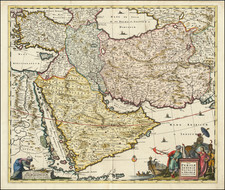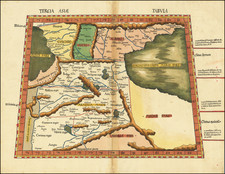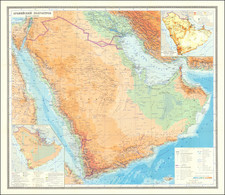An attractive antique map of the Persian Gulf, delicately engraved and charmingly colored. The map stretches from Basra on the Arvand River in the northwest to past the Strait of Hormuz in the southeast. The map is primarily a navigational chart, with limited inland detail.
The "Bahhreijn I[sles]" are shown, with three islands named "Aval," "Samahe," and "Arad." It is very likely that "Samahe" is an early attempt at the peninsula of Qatar. The many islands, sandbanks, and reefs of the gulf are shown. Detail along the Arabian Peninsula is limited, and the names of more settlements and features appear along the Persian side of the gulf.
The map is based on the observations made by the Germany explorer Carsten Niebuhr during the Royal Danish Arabia expedition of 1761 to 1767. The expedition was a scholarly quest to try to locate Old Testament localities, as well as make discoveries related to natural history and geography. The expedition was ill-fated, and Niebuhr was the only European member to survive. However, he made extensive notes of his voyage, visiting the ruins of Babylon, Baghdad, Mosul, and Aleppo, well as being in extensive contact with local rulers. After the expedition, Niebuhr dedicated ten years of his life to writing detailed reports and ensuring that the knowledge gained during the expedition could be passed on. His works were highly prized in Europe, especially by his contemporary von Goethe.
This map was published in at least two states, one of which appeared in Philippe de Pretot's Atlas universel pour l'étude de la géographie et de l'histoire ancienne et moderne.











![[ Arabian Gulf / Persian Gulf ] Golfe Persique Dresse en 1758 et publie en 76 . . .](https://storage.googleapis.com/raremaps/img/small/100245.jpg)

![(First state!) [Arabia and Persian Gulf] Tabula Asiae VI](https://storage.googleapis.com/raremaps/img/small/94608.jpg)
